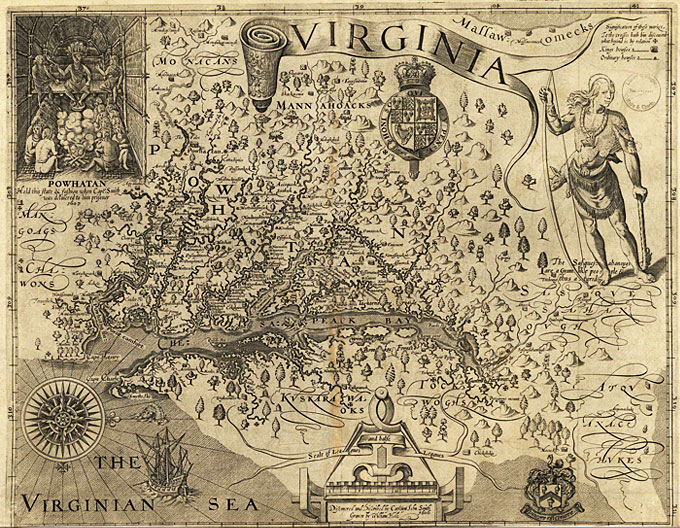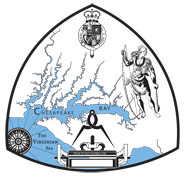Geocaching.com Do It Yourself – Create a Geotrail

Editor’s note: Susan Kelley, Calvertcachers, has volunteered countless hours organizing geotrails in multiple states. A geotrail offers geocachers a variety of hides linked by a central theme or topic. There is often a prize for completing all or part of a geotrail.
This article shares Susan’s experience and her advice on creating a geotrail. She’s been part of a months-long effort to launch the Capt. John Smith geotrail. The Capt. John Smith geotrail challenge begins on June 4th.
Geocaching.com: How did the idea for the Capt John Smith geotrail begin?
Susan: With the success of the Star-Spangled Banner Geotrail, The National Park Service (NPS) and Chesapeake Conservancy wanted to do something special to commemorate the adventures and explorations of Capt. John Smith. A Geocaching project was a perfect fit since Capt. John Smith was the first person to map the Chesapeake region beginning in 1607. His detailed map was published in 1612 and remained in active use for seven decades. Considering the primitive tools he had to use, the geographical accuracy is amazing. I would guess that Capt. John Smith would have loved geocaching!
Geocaching.com: What’s involved in organizing a geotrail? How many people, maintenance, time, etc?
Susan: Lots of work! In all seriousness, I have helped to coordinate four major trail projects, the first being the Maryland Municipal League Geotrail which was the first statewide geotrail in the United States. This trail launched with over 70 caches throughout Maryland. This was followed up with the M-NCPPC Park Ranger Challenge, the Star-Spangled Banner (SSB) Geotrail, and launching June 4th, the Captain John Smith (CJS) Geotrail. Both the SSB and CJS have caches in several states so it does take a great amount of coordination and hours of work. However, these trails would not have been possible without the help of many volunteer geocachers.

The best aspect of geotrails is that it affords us the opportunity to partner with park, town, tourism, and government officials. This has been a win-win for everyone involved and as they have learned more about geocaching, the more they have welcomed geocaching into their park or community. With these trails, we have partnered a local geocacher with a facility. The cacher would schedule a time to meet with the facility staff, give them an introduction lesson on how to geocache, and show them how to log-on and create a Geocaching.com account. The cacher would help them select an appropriate location for their trail hide, place the cache and send us the hide details for the cache page. Once the trails have launched, staff have loved meeting the many geocachers visiting their site. The facilities/parks now get excited when they see a cacher going for their hide. Some will even help the cacher if they cannot locate the cache.
Geocaching.com: Describe the scope of the Capt. John Smith geotrail to us, what’s involved for the geocacher, when does it begin?
Susan: The Captain John Smith Geotrail is set to launch on June 4, 2011. This date was selected by the NPS to coincide with National Trails Day. We are kicking-off the CJS trail with a special event GC2F414 at the National Colonial Farm – Accokeek Foundation. The event will feature booths, exhibits and demonstrations from the Maryland Geocaching Society, Northern Virginia Geocaching Organization, Magellan, and many of the parks, museums, and historic sites along the CJS trail! Cachers will also have the opportunity to pick-up a copy of the passport and a list of CJS hides. We will have lots of nice door prizes including a GPS unit donated by Magellan!

The trail will have over 40 caches within Maryland, Delaware and Virginia. The trail will focus on five rivers; the Susquehanna, Potomac, Nanticoke, Rappahannock, and James (including the Chickahominy branch). The trail will work off of a passport system. Cachers will be required to find, log and post a pic at 15 CJS caches to earn a beautiful trackable CJS geocoin.
The National Park Service and Chesapeake Conservancy have gone the extra mile by preparing a history write-up for every cache location. Each cache page will include a special history piece to give cachers an idea of what they will discover at the cache site. The history surrounding Capt. John Smith’s explorations is amazing! I am learning more and more each day with preparing the cache pages and I’m confident that folks will enjoy the trail.
Geocaching.com: Why a geotrail? What does this format offer beyond having a themed geocache or a Multi-cache?
Susan: Geotrails offer cachers an experience that is linked by a central theme or topic with a variety of hides. Cachers can pick and choose which caches along the trail are best suited for them or of their interest. A little something for everyone! Plus, there is a reward at the end. We know how geocachers love challenges, so the trails offer cachers a fun opportunity.
Geocaching.com: What are folks reaction when they complete a geotrail and what sort of feedback do you hear?

Susan: With both the MML and SSB trails, the response from geocachers has been overwhelmingly positive. All of these projects required us to partner with park staff and/or government officials, so the hides are quality and each offer a little something special. No matter if it is a nice hike with a scenic view, or a multi/puzzle cache at a museum with fascinating exhibits and displays, the response has been great! Log-on to Geocaching.com and read some of the logs from the Star-Spangled Banner Geotrail caches.
Geocaching.com: What is your advice if people would like to create a geotrail in their neck of the woods?
Susan: Talk with cachers or geocaching groups within your region to gauge interest and willingness to assist. A trail will take the time and efforts of many. If you have an idea, schedule a time to meet with your local tourism, parks or government staff and share your thoughts and the positive outcome a geocache trail will have for your community. Do your research and go prepared to the meeting with handouts, a presentation and stats from other geocache projects. Place a temporary cache and take them outside to find a cache! A trail should have a related theme or topic and if the funding is available, a reward for the geocacher for completing the trail. There are great resources on the Geocaching.com site and most trail coordinators are willing to share information. Reach out to others when doing your research.




